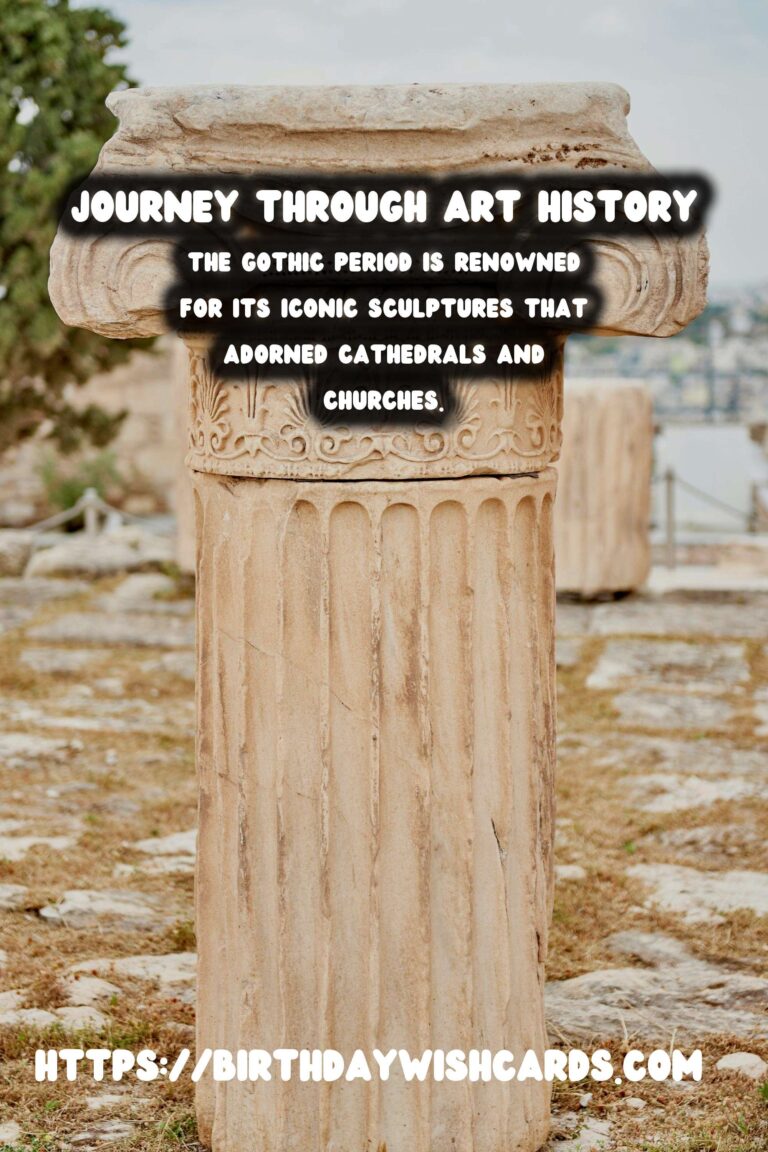
Art history tours offer an enriching journey through the ages, allowing enthusiasts and novices alike to explore the masterpieces of the past. From the intricate Gothic sculptures to the vibrant Renaissance frescoes, each era tells a story of cultural transformation and artistic innovation.
The Mystique of Gothic Sculptures
The Gothic period, spanning the late 12th to the 16th century, is renowned for its iconic sculptures that adorned cathedrals and churches. Characterized by their elongated forms and expressive gestures, these sculptures aimed to bring the teachings of Christianity to life. The Notre Dame Cathedral in Paris, with its imposing gargoyles and saints, stands as a testament to the profound artistic achievements of the Gothic era.
The symbolism embedded within Gothic sculptures not only served a religious purpose but also reflected the societal structures and philosophical ideas of the time. These sculptures often depicted biblical figures, saints, and allegorical scenes that provided moral and spiritual guidance to the viewers.
The Splendor of Renaissance Frescoes
Transitioning from the Gothic period, the Renaissance ushered in a new era of creativity and exploration. The fresco, a technique of mural painting executed upon freshly laid lime plaster, became a prominent medium for artists. This period saw the birth of unparalleled artistic talent, exemplified by masters like Michelangelo and Leonardo da Vinci.
The Sistine Chapel, adorned by Michelangelo’s ceiling frescoes, is arguably the pinnacle of Renaissance art. These frescoes not only showcase the artist’s technical prowess but also his profound ability to convey human emotion and biblical narratives. The use of perspective and anatomical precision in Renaissance frescoes marked a significant departure from the stylized forms of the Gothic period.
Connecting with Art on a Personal Level
Embarking on an art history tour allows individuals to connect with the past on a personal level. Walking through the hallowed halls of historical sites, one can witness the evolution of artistic techniques and thematic diversity first-hand. Whether it is the somber tones of a Gothic sculpture or the vivid colors of a Renaissance fresco, each piece offers insight into the cultural and historical context of its creation.
Art history tours also provide an opportunity to appreciate the underlying stories and inspirations that fueled these artistic movements. Engaging with art in this way fosters a deeper understanding of the human experience and the timeless nature of creativity.
Planning Your Art History Tour
For those intrigued by the world of art, planning an art history tour can be both exhilarating and overwhelming. It is essential to prioritize destinations that resonate with your personal interests. Whether you are captivated by the Gothic cathedrals of Europe or the Renaissance marvels of Italy, there are countless landmarks awaiting exploration.
Ensure to choose guided tours that offer insightful commentary and allow ample time for observation. Engaging with knowledgeable guides can enhance the experience, providing context and historical background that bring the artworks to life.
Conclusion: The Timeless Appeal of Art
Art history tours serve as a bridge to the past, offering an intimate glimpse into the rich tapestry of human endeavor and expression. From Gothic sculptures to Renaissance frescoes, these tours celebrate the enduring legacy of art and its power to transcend time and space. Whether you are an art aficionado or a curious traveler, these journeys promise an unforgettable experience that will enrich your understanding and appreciation of art’s pivotal role in shaping history.
The Gothic period is renowned for its iconic sculptures that adorned cathedrals and churches. The fresco became a prominent medium for artists during the Renaissance, showcasing unparalleled artistic talent.
#ArtHistory #CulturalTours

